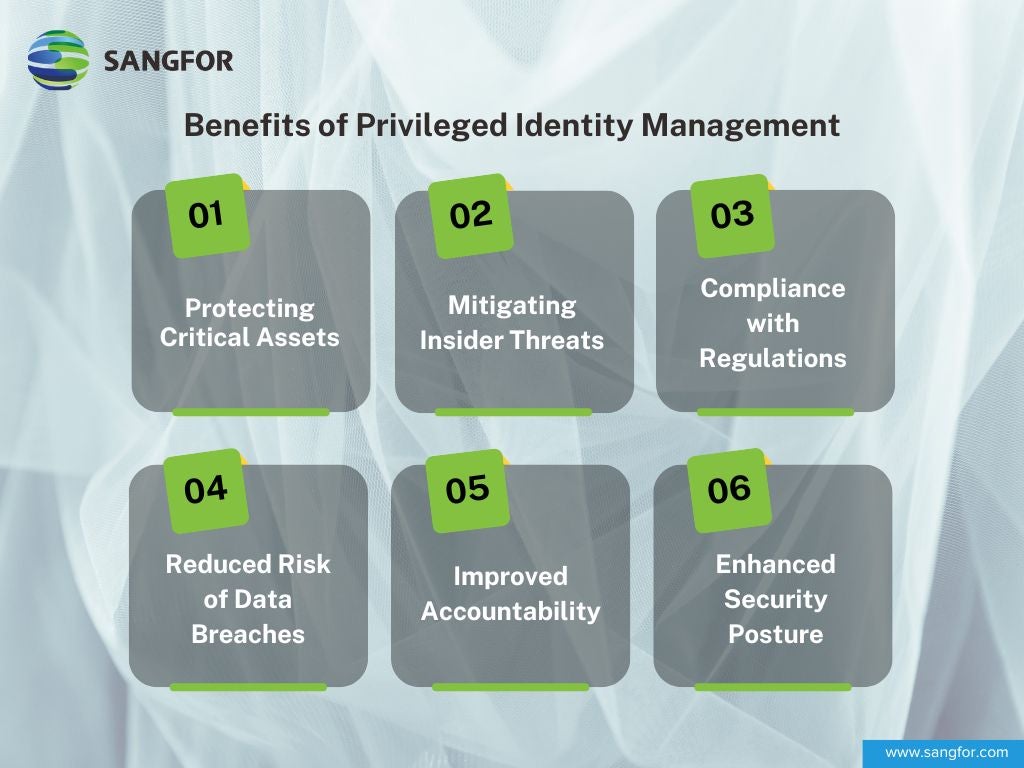Privileged identity management (PIM) is a set of practices and tools focused on securing accounts with high-level access to critical systems and data. These accounts, held by administrators, database managers, and service accounts, can cause serious damage if compromised.
It enables people to manage, control, and monitor access to important resources in their organizations. To implement PIM, organizations can choose from a specialized, standalone tool or a set of tools and processes.

How does Privileged Identity Management work?
Activation and Assignment
First, you define the roles that require privileged access. Next, you identify eligible users who may need access to these roles.
These users are typically administrators or individuals with specific responsibilities. You assign eligible users to the relevant roles. However, these assignments are initially inactive.
Just-in-Time Access
When an eligible user needs to perform a privileged operation, they request activation of the assigned role. PIM provides just-in-time access, meaning the user’s access is temporary and time-bound. They can activate the role for a specific duration.
The activation request goes through an approval process if configured previously, ensuring proper authorization.
Activation Approval
If approval is required, designated approvers review the activation request. Once approved, the user gains temporary access to the privileged role. If Multifactor or Two-factor Authentication is enabled, the user must complete MFA before activation.
This adds an extra layer of security by ensuring that only authenticated users can gain access.
Monitoring and Auditing
PIM continuously monitors activated roles. It tracks who activated the role, when, and for what purpose. You receive notifications about role activations. Access reviews help ensure that users still need their assigned roles.
Justification and Accountability
Users must provide a reason (justification) for activating a role. This helps maintain accountability. Audit logs capture all activation-related activities.
Deactivation
After the user completes their task, the role is automatically deactivated at the end of the specified activation period. Users can also manually deactivate roles when they no longer need them.
Emergency Access
In critical situations, you can enable emergency access, allowing immediate activation of roles without approval. Emergency access should be used sparingly and with caution.
Reporting and Compliance
PIM provides audit reports and history for compliance purposes. You can track changes, review access patterns, and ensure adherence to security policies. Moreover, PIM can be configured to send real-time alerts for specific activities, such as new role assignments, activations, or unusual access patterns.
Why is PIM Important for an Organization?
Today, most organizations have numerous employees with varying levels of access required to perform their roles. Their IT teams often struggle to provide precise access to corporate resources because of a lack of contextual information about users and requesters. Privileged identities that require access to sensitive resources, such as IT admins, users, contractors, and vendors, are everywhere in every organization.
However, without proper access control strategies, these higher privileges pose significant security risks. Poor management of privileged identities can lead to security breaches or malware attacks, allowing attackers to easily access sensitive information unnoticed.
That’s where Privileged Identity Management solutions come into play. The PIM solutions help effectively manage and control data access by centralizing, controlling, tracking, and securing access to privileged accounts and identities, thereby ensuring data privacy and accuracy.
Benefits of Privileged Identity Management
- Protecting Critical Assets: Imagine the damage if an attacker gains access to an administrator account. They could steal sensitive data, corrupt systems, or even launch attacks on your customers. PIM safeguards these privileged accounts, acting as a first line of defence against such threats.
- Mitigating Insider Threats: Disgruntled employees or those with malicious intent can be a significant security risk. PIM helps address this by limiting access and monitoring activity. If someone tries to misuse their privileges, it's easier to detect and prevent.
- Compliance with Regulations: Many regulations, like HIPAA and PCI DSS, mandate strict data security measures. PIM helps organizations comply with these regulations by demonstrating control over privileged accounts and access to sensitive data.
- Reduced Risk of Data Breaches: Data breaches are often the result of compromised privileged accounts. PIM significantly reduces this risk by making it harder for attackers to gain access and steal data.
- Improved Accountability: Knowing exactly who has accessed privileged accounts and what they've done fosters accountability. This can deter misuse and simplify investigations in case of security incidents.
- Enhanced Security Posture: By implementing PIM, organizations establish a layered security approach. This makes it more difficult for attackers to exploit vulnerabilities and gain unauthorized access to critical systems and data.

Key features of Privileged Identity Management
Role-Based Access Control (RBAC)
PIM allows you to define roles with specific permissions for accessing resources. Users are assigned roles based on their job functions, ensuring they only have the minimum level of access required to perform their tasks. This enforces the principle of least privilege, reducing the attack surface and potential damage if an account is compromised.
Just-in-Time (JIT) Privileged Access
PIM eliminates the need for permanent privileged access. Users request access only when they need it to perform a specific task. This granular control minimizes the time a user has elevated privileges, reducing the window of vulnerability.
Access can be granted for a specific time, reducing the risk of long-term exposure to privileged roles.
Approval Workflows
Privileged Identity Management requires users to request access to privileged roles, which then goes through an approval process where designated administrators can review and grant or deny the requests. Users must provide a justification for activating privileged roles, allowing administrators to understand the purpose behind access requests.
Multi-Factor Authentication (MFA)
PIM requires additional verification beyond just a username and password before granting access to privileged accounts. This could involve fingerprint scans, one-time codes, or security tokens. MFA significantly strengthens authentication and makes it much harder for attackers to gain unauthorized access.
Monitoring and Auditing
PIM solutions provide detailed logs of all privileged account activity. This includes information about who accessed what, when, and what actions were performed. These logs are crucial for investigating security incidents, detecting suspicious behavior in user activity, and ensuring compliance with regulations.
Differences between PIM, PAM, and IAM
| Aspect | PIM | PAM | IAM |
|---|---|---|---|
| Full form | Privileged Identity Management | Privileged Access Management | Identity and Access Management |
| Scope | Privileged user identities and their associated access rights | Privileged users and their access to critical systems and data | All users and their access to resources |
| Purpose | Enhances security by managing privileged role assignments and activations | Enhances security by managing and monitoring access to sensitive resources | Manages user identities and access rights to resources and applications |
| Key functionalities | Identity discovery, least privilege, role-based access control (RBAC) | PAM tools include Session management, monitoring and auditing, password vaulting | User provisioning, access control, authentication, single sign-on (SSO) |
| Target Users | Administrators and users with elevated privileges | Administrators and users with elevated privileges | All users within an organization |
| Risk Mitigation | Reduces risks associated with existing privileged access | Reduces risks associated with unauthorized privileged access | Reduces risks associated with improper user access management |
Privileged Identity Management Tools
Privileged Identity Management (PIM) tools are specialized software solutions designed to manage, control, and monitor privileged access within an organization. These tools assist organizations in reducing security risks linked to unauthorized access and misuse of privileged accounts.
Major features include password management, access control, session monitoring, auditing, and more.
Cyber Protection with Sangfor
Sangfor Technologies, a pioneer in cybersecurity and cloud infrastructure offers solutions that include the features of PIM tools. Sangfor Internet Access Gateway (IAG) is an extensive secure web gateway for safeguarding user internet access behaviour. It uncovers user identity with analytics into who is using what applications and when it is used on your network.
Sangfor Access Secure, a comprehensive SASE (Secure Access Service Edge) solution improves the overall security of organizations by providing a comprehensive security suite. It integrates multiple layers of protection including a next-generation firewall, intrusion prevention, a secure web gateway, and advanced threat protection. This all-inclusive approach minimizes potential vulnerabilities and attack surfaces - reducing the likelihood of security breaches. If you need more information, visit us at www.sangfor.com or contact us here.
People Also Ask
A privileged identity refers to a user account or identity that has elevated permissions and access rights beyond those of a regular user. These identities can perform administrative tasks, manage IT systems, access sensitive data, and configure security settings. Examples include system administrators, database administrators, and network engineers.
PIM (Privileged Identity Management) focuses specifically on managing and securing privileged identities. It encompasses practices like discovering all privileged accounts, enforcing least privilege, and implementing just-in-time access.
PAM (Privileged Access Management) is a broader category that includes PIM and additional functionalities. PAM also deals with managing privileged access itself, such as controlling how users elevate their privileges, monitoring privileged sessions, and securing privileged credentials.
IAM (Identity and Access Management) is the overarching framework for managing all user identities and their access to resources within an organization. It encompasses user provisioning, access control, authentication, and single sign-on (SSO).
PIM, as mentioned earlier, focuses specifically on managing and securing privileged identities within the IAM framework.
Privileged Identity Management is used to enhance security by managing and controlling access to privileged roles within an organization. It ensures that high-level permissions are granted only when necessary and for a limited time, reduces the risk of misuse, provides detailed audit logs for compliance, and facilitates access reviews.
The advantages of PIM include enhanced security, improved compliance, reduced risk of data breaches, increased accountability, and better operational efficiency.
Privileged users are typically identified by the specific roles they hold within the organization and the elevated access rights associated with those roles. IT administrators, database managers, and security personnel are common examples of privileged users.
Privileged accounts are those with elevated access rights and permissions beyond regular user accounts. They can be identified by their ability to perform administrative functions, access critical systems and data, and manage security settings. Examples include root accounts, domain administrator accounts, and service accounts with elevated permissions.
Examples of privileged identities include domain administrators, system administrators, database administrators and service accounts.





